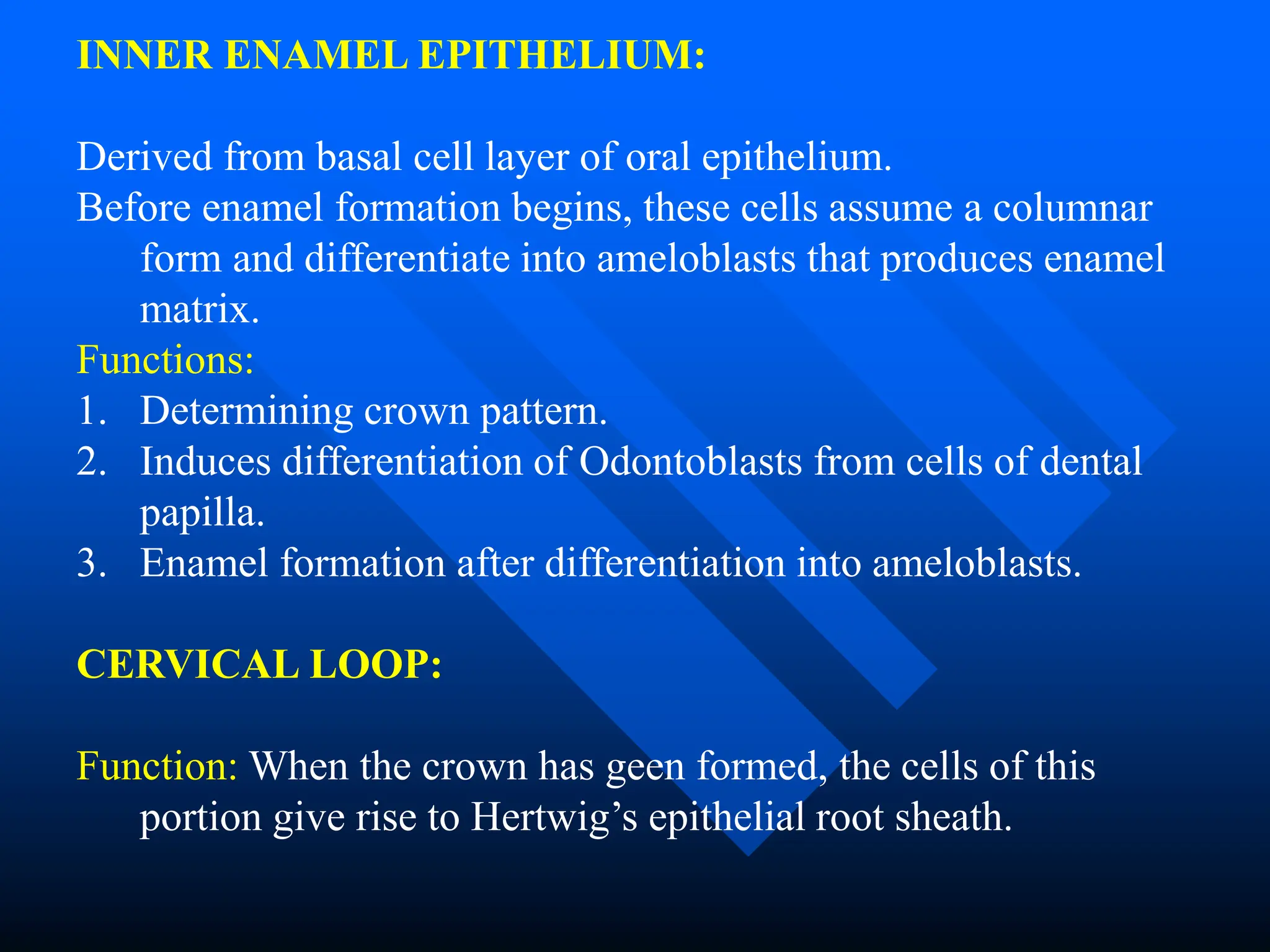Enamel is the highly mineralized protective covering on tooth crowns. It is composed primarily of hydroxyapatite crystals arranged in microscopic rods that extend from the dentin-enamel junction to the enamel surface. The document discusses the physical and chemical properties of enamel, as well as its microscopic structure including rods, striations, Hunter-Schreger bands, and perikymata surface features. It also describes the development of enamel, including the life cycle of ameloblasts and the various stages of amelogenesis. Clinical considerations related to enamel such as hypocalcified areas, age changes, and dental caries are briefly mentioned.








































































